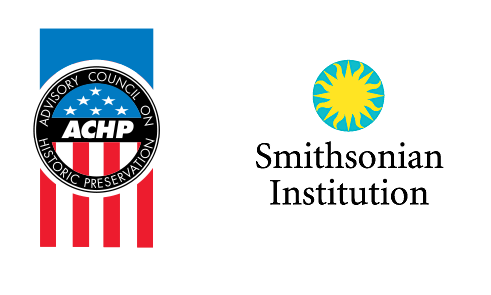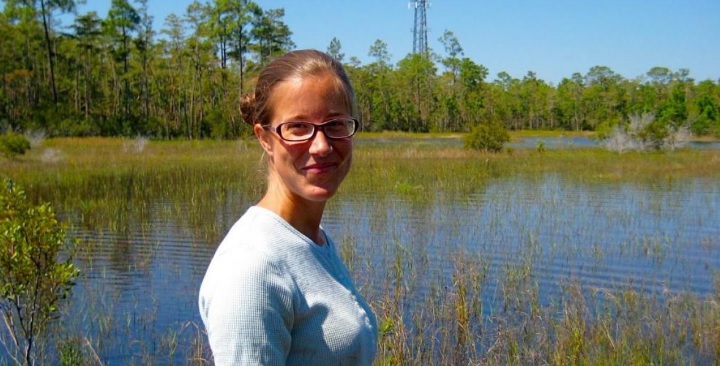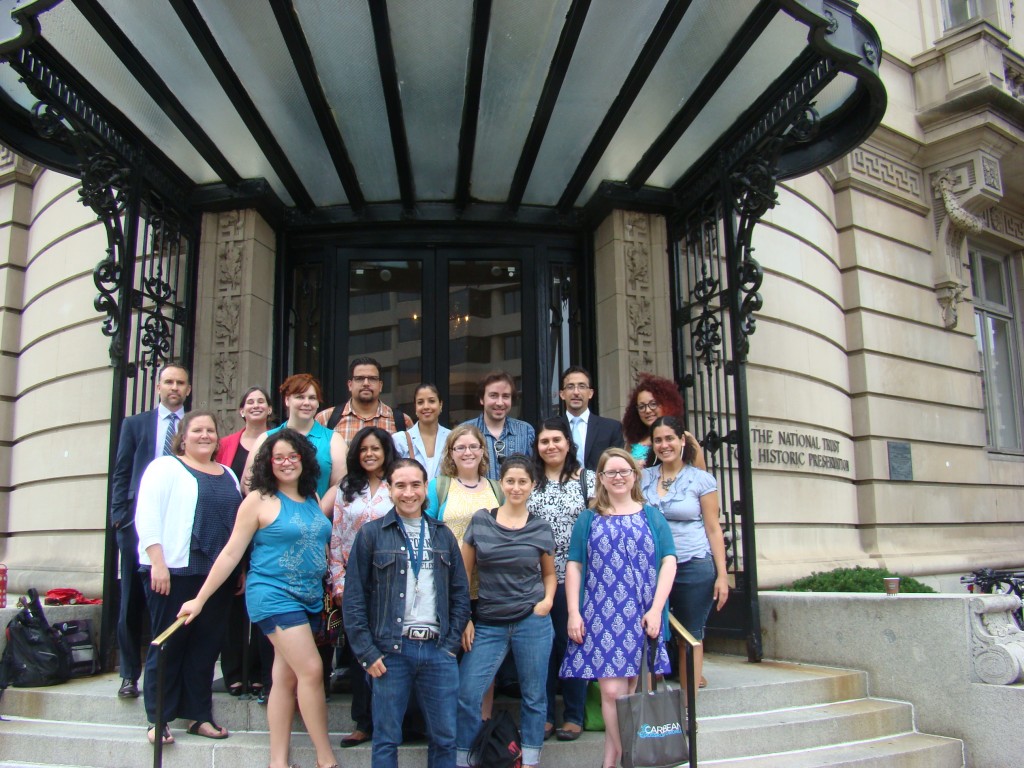Fellowship Opportunities
This is a list of current fellowship opportunities at the Smithsonian, sorted by unit. Use this list to get a better sense about where you might like to pursue a fellowship at the Smithsonian and click the links to dig deeper. You can also view all of the Smithsonian’s Fellowships by their deadlines here.
Smithsonian-Wide (SI)
These are centrally funded opportunities that place fellows throughout the Smithsonian.
Click the links to find out how each program works and how to apply.
The Smithsonian Institution Fellowship Program (SIFP)
Smithsonian Institution Fellows are key to the Smithsonian’s aspiration to discover, create, innovate and diversify. The Smithsonian’s vast collections, numerous facilities, and staff expertise provide an incredible range of opportunities for independent research in residence at the Institution. Smithsonian Institution Fellows receive stipends from the central fund and can be found in all areas of the Smithsonian exploring, probing and charting new directions. For more information look here.
Advisory Council on Historic Preservation & Smithsonian Cultural Heritage Fellowship
Through a joint fellowship with the Advisory Council on Historic Preservation (ACHP) and the Smithsonian, the fellow will explore place-based, cultural heritage and the connection between intangible cultural heritage and place. For more information go here.
Big Ten Academic Alliance Smithsonian Fellowship

The Big Ten Academic Alliance and the Smithsonian Institution (SI) invite doctoral candidates at Big Ten Academic Alliance Member Universities to apply for one-year fellowships to support research in residence at Smithsonian Institution facilities. All fields of study that are actively pursued by the museums and research organizations of the Smithsonian Institution are eligible. For more information go here.
Biodiversity Genomics Postdoctoral Fellowship
The Smithsonian Institution (SI) Postdoctoral Fellowship in Biodiversity Genomics promotes collaborative research in these fields involving comparative genomic approaches such as phylogenomics, population genomics, metagenomics or transcriptomics, and have a component that involves significant bioinformatics analysis. The Smithsonian’s molecular research facilities are located at National Museum of Natural History (NMNH), Smithsonian Conservation Biology Institute/National Zoological Park (SCBI/NZP), Smithsonian Environmental Research Center (SERC), and the Smithsonian Tropical Research Institute (STRI) in the Republic of Panama. Collaboration among SI facilities is encouraged. For more information go here.
Fulbright-Smithsonian Awards
The Smithsonian welcomes Fulbright Students and Scholars from around the world to come to our facilities, engage with our colleagues, and conduct research of their own. Foreign Fulbright Commissions and Embassies conduct the application process and selection, but Foreign Students and Scholars should engage with us to discover the unlimited possibilities for research and study.
The Smithsonian also welcomes Fulbrighters from Ireland and UK under hyphenated awards.
For more information on Fulbright opportunities at the Smithsonian, see here.
George E. Burch Fellowship in Theoretical Medicine and Affiliated Sciences

George E. Burch
The Burch Fellowship Program is an opportunity that awards $60,000 per year plus allowances to post-doctoral scholars, whose research interests lie within medicine, biology, physics, chemistry, and fields in the social science and humanities, as it applies to human health and medicine. For more information go here.
The James Smithson Fellowship
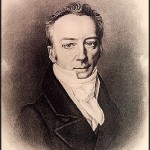
James Smithson
Started through the generosity of Paul Neely, past chair of the Smithsonian National Board, the James Smithson Fellowship Program offers an early career opportunity for post-doctoral scholars interested in gaining experience in both scholarship and policy through a Smithsonian lens. The fellowship provides an immersion experience working with Smithsonian scholars and relevant collections. In addition the fellows will develop an inside view of how policy is crafted and how resource plans are designed by participating in a well-planned program offering direct experience internally with Smithsonian leaders, and externally with leaders throughout the Washington, DC network. For more information, look here.
Diversity Awards Program - Visiting Student
The Office of Fellowships and Internships is committed to increasing the participation of U.S. Citizens and U.S. permanent residents who have previously been underrepresented in Smithsonian scholarly exploration. The Diversity Awards Program provides an incredible range of opportunities for independent research. Visiting Students can explore, probe and chart new directions at the Smithsonian. For more information, look here.
Native American Community Scholars Awards

Appointments in residence at the Smithsonian are awarded to applicants who are formally or informally related to a Native American community, to undertake projects on a Native American subject and utilize the Native American resources of the Institution. You can learn more here.
Native American Visiting Student Awards
Appointments are available for currently enrolled graduate students who are formally or informally related to a Native American community, to pursue independent research on a Native American subject and utilize the Native American resources of the Institution. There is more information here.
Smithsonian Artist Research Fellowship

2015 SARF Artist: Paco Cao (1) Psycho-Linguistic-Retro-Futuristic Self-Portrait, 2013 (part of a series)
The Smithsonian Artist Research Fellowship is a nomination-only opportunity that provides distinguished artists one or two months in residence at a Smithsonian location immersed in seriously amazing collections and collaborating with world class staff. Past recipients of this extremely competitive fellowship have delved deep to build connections between art, science, history and culture. Discover more here.
Smithsonian Mpala Postdoctoral Fellowship
Mpala Postdoctoral Fellows study biology, anthropology, geology, hydrology, material science, social science, soil science or related areas. Tenable in residence at Mpala Research Centre, Kenya (see www.mpala.org). The project must be a meaningful collaboration with an appropriate Smithsonian unit (collaboration with multiple units is encouraged). Proposals are encouraged in the fields of conservation medicine, soils/erosion potential/water conservation, rangeland regeneration/grazing management, ecosystem services, socio-economic studies of natural resource management, and the principals of wildlife ecology and behavior, but other creative ideas are welcome. Collaboration with the ForestGEO/CTFS plot is also encouraged. More information can be found here.
The Secretary’s Distinguished Research Fellowship recognizes the most promising and innovative scientific research proposals to the one-year Smithsonian Institution Fellowship Program by providing an awardee with a second year of support. This endowed fellowship was established in 2009 through contributions from members of the Smithsonian Board of Regents For more information, look here.[/learn_more]
Smithsonian Postgraduate/Postdoctoral Fellowships in Conservation of Museum Collections Program
 This fellowship program is offered by the Smithsonian Institution to provide opportunities for recent graduates of masters programs in art and archaeological conservation or the equivalent or conservation scientists, including those at the postdoctoral level, who wish to conduct research and gain further training in Smithsonian conservation laboratories for conservation of objects in museum collections. For more information, look here.
This fellowship program is offered by the Smithsonian Institution to provide opportunities for recent graduates of masters programs in art and archaeological conservation or the equivalent or conservation scientists, including those at the postdoctoral level, who wish to conduct research and gain further training in Smithsonian conservation laboratories for conservation of objects in museum collections. For more information, look here.
Yale Smithsonian Fellowship
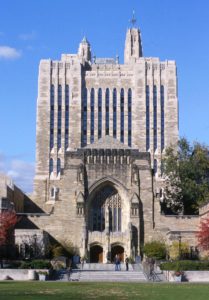
Yale Smithsonian Fellows conduct independent study and research related to Smithsonian collections, experts or facilities in cooperation with at least one Smithsonian advisor. Fellowships are offered for three to twelve months for pre-doctoral and post-doctoral applicants, and for 10 weeks for graduate students. All fields of study that are actively pursued by the museums and research organizations of the Smithsonian Institution are eligible. For more information go here.
Smithsonian Unit Fellowship Opportunities
These are fellowship opportunities available at each of the Smithsonian’s various museums, research centers, and other units. Click the link for more information about each opportunity, and how to apply.
Center for Folklife and Cultural Heritage (CFCH)
The Rigzin Fellowship offers a two-to-four-week cultural leadership program in the U.S. available to Tebetans in China engaged in culture or the arts. More information can be found here.
Conservation Commons
The SI-CI Postdoctoral Fellowship is a two-year fellowship that specifically contributes to the goals of both the Smithsonian Institution’s Working Land and Seascapes program and Conservation International’s Sustainable Landscapes Partnership program. More information can be found here.
Freer-Sackler Galleries of Art (FSGA)
The Anne van Biema Fellowship was established by bequest to promote excellence in research and publication on the Japanese visual arts. Fellowships support research at the Freer Gallery of Art and Arthur M. Sackler Gallery of the Smithsonian Institution in Washington, DC. The Galleries provide magnificent opportunities for collections-based study, and hold world-class library and archival collections related to Japanese visual arts. Research proposals are evaluated in terms of merit, originality, methodology, and potential for significant publication that will advance scholarly and public understanding of the Japanese visual arts. Interdisciplinary proposals with a primary focus on Japanese visual arts are considered. More information can be found here.
The Lunder Fellowship provides opportunities for both emerging and established scholars to conduct research in the Freer collections and to work with the Lunder Consortium for Whistler Studies on collaborative programs and publications focusing on James McNeill Whistler and the art of the Aesthetic Movement. This fellowship is offered through the generosity of the Lunder Foundation and administered through the Lunder Consortium for Whistler Studies (comprising the Freer Gallery, Colby College, and University of Glasgow). Fellowships are awarded for twelve- to eighteen-month terms. More information can be found here.
The J.S. Lee Memorial Fellowship fellowship facilitates the international exchange of curatorial expertise and contributes to the professional development of Chinese art curators and academics. Fellows may choose to be based at the Freer and Sackler or at a number of other museums worldwide. More information about this fellowship can be found here.
Museum Conservation Institute (MCI)
2020 Smithsonian Post-Graduate Paintings Conservation Fellowship with NMAAHC and MCI
The National Museum of African American History and Culture (NMAAHC) and Museum Conservation Institute (MCI) of the Smithsonian Institution in Washington, DC is accepting applications for a one-year post-graduate fellowship in modern and contemporary paintings conservation beginning in late Summer 2020.
The Fellow will be invited to participate in the survey, treatment, and exhibition of paintings and will be invited to participate in the preventive care in painting storage at NMAAHC’s Visual Art Collection and conduct technical analysis at MCI.
The Fellow will be expected to pursue independent research related to paint analysis, preventive conservation, and treatment of diverse mixed media and single media paintings in the NMAAHC’s collection. The Fellow’s allied research should seek to broaden the discipline through their scholarly undertaking. Research topics of interest to the Fellow should be included in the application. The Fellow will have the opportunity to participate in routine activities of the MCI painting conservation lab and related Smithsonian workshops, symposia, or programs. The Fellow will be advised by the NMAAHC Head of Collections and the MCI Senior Paintings Conservator. To defray living costs during the tenure of this one-year fellowship, the Fellow will be offered a stipend of $40,000 plus health insurance, for research and travel, not to exceed $7,000.
Applicants should be a recent graduate of a recognized master’s level conservation training program with knowledge and understanding of conservation principles and practices; conservation challenges of modern and contemporary paintings and the importance of preventive care; organic chemistry and its application in paint adhesion, cleaning and identification; paint aging and deterioration; and/or painting structure and processes.
More information can be found here.
National Air and Space Museum (NASM)
The National Air and Space Museum offers four fellowships. The Guggenheim Fellowship is a competitive three- to twelve-month in-residence fellowship for pre-or postdoctoral research in aviation and space history. Predoctoral applicants should have completed preliminary course work and examina-tions and be engaged in dissertation research. Postdoctoral applicants should have received their Ph.D. within the past seven years. A stipend of $30,000 for predoctoral candidates and $45,000 for postdoctoral candidates will be awarded, with limited additional funds for travel and miscellaneous expenses. More information can be found here. The Charles A. Lindbergh Chair in Aerospace History is a competitive twelve-month fellowship open to senior scholars with distinguished records of publication who are working on, or anticipate working on, books in aerospace history. Support is available up to a maximum of $100,000 a year. Each Lindbergh Chair application is judged relative to the suitability of its proposal, the scholarly record of the applicant, the availability of relevant museum staff advisors knowledgeable on the proposed topic, whether the NASM can provide the specific resources, and the applicability of the proposal to NASM’s work-in-progress series. The winner is expected to reside in the Washington, D.C., area for nine months to a year, the academic year generally starting in September and ending by the following August. He or she is also expected to take part in discussions with museum staff and to attend professional seminars and colloquia. Along with access to primary research materials, the winner is given the use of an office, a phone and a computer. More information can be found here. The Verville Fellowship is a competitive nine- to twelve-month in-residence fellowship intended for the analysis of major trends, developments, and accomplishments in the history of aviation or space studies. The fellowship is open to all interested candidates with demonstrated skills in research and writing. An advanced degree in history, engineering, or related fields is not a requirement. A stipend of $55,000 will be awarded for a 12-month fellowship, with limited additional funds for travel and miscellaneous expenses. More information can be found here. The Engen Conservation Fellowship is a competitive twelve month in-residence fellowship for recent Master’s graduates in conservation intended to introduce fellows to a wide range of composite objects, metals, organic materials and painted surfaces. A stipend of $37,000 will be awarded for a 12-month fellowship, with limited additional funds for travel and research related expenses. More information can be found here.
National Museum of African American History and Culture (NMAAHC)
2020 Smithsonian Post-Graduate Paintings Conservation Fellowship with NMAAHC and MCI
The National Museum of African American History and Culture (NMAAHC) and Museum Conservation Institute (MCI) of the Smithsonian Institution in Washington, DC is accepting applications for a one-year post-graduate fellowship in modern and contemporary paintings conservation beginning in late Summer 2020.
The Fellow will be invited to participate in the survey, treatment, and exhibition of paintings and will be invited to participate in the preventive care in painting storage at NMAAHC’s Visual Art Collection and conduct technical analysis at MCI.
The Fellow will be expected to pursue independent research related to paint analysis, preventive conservation, and treatment of diverse mixed media and single media paintings in the NMAAHC’s collection. The Fellow’s allied research should seek to broaden the discipline through their scholarly undertaking. Research topics of interest to the Fellow should be included in the application. The Fellow will have the opportunity to participate in routine activities of the MCI painting conservation lab and related Smithsonian workshops, symposia, or programs. The Fellow will be advised by the NMAAHC Head of Collections and the MCI Senior Paintings Conservator. To defray living costs during the tenure of this one-year fellowship, the Fellow will be offered a stipend of $40,000 plus health insurance, for research and travel, not to exceed $7,000.
Applicants should be a recent graduate of a recognized master’s level conservation training program with knowledge and understanding of conservation principles and practices; conservation challenges of modern and contemporary paintings and the importance of preventive care; organic chemistry and its application in paint adhesion, cleaning and identification; paint aging and deterioration; and/or painting structure and processes.
More information can be found here.
National Museum of American History (NMAH)
The National Museum of American History offers several fellowships. The Lemelson Center Fellowships supports projects that present creative approaches to the study of invention and innovation in American society. These include, but are not limited to, historical research and documentation projects, resulting in publications, exhibitions, educational initiatives, documentary films, or other multimedia products. More information can be found here. The Lemelson Center Travel To Collections Award supports research on the history of invention and innovation based on the holdings of the Museum’s Archives Center and curatorial divisions. The Archives Center holds more than 20,000 feet of archival materials. The collections are particularly strong in personal papers and business records documenting the history of American enterprise and technology. More information can be found here. The Lemelson Center’s Arthur Molella Distinguished Fellowship supports the work of experienced authors and senior scholars from the history of technology, science and technology studies, business history, museum studies, STEAM education, or an allied field. More information can be found here. In addition, the Travel Research in Equity Collections (TREC) fellowship offers short-term travel awards for researchers to make use of the museum’s equity-related collections; more information can be found here.
In addition, NMAH works together with the Smithsonian American Art Museum (SAAM) to support fellows through the Joe and Wanda Corn Fellowship. The Joe and Wanda Corn Fellowship is endowed by their former students Mike Wilkins and Sheila Duignan and supports scholars whose research interests span American art and American history. Recipients will draw on the Smithsonian’s broad resources in both areas, utilizing the holdings of the Smithsonian American Art Museum (SAAM) and the Smithsonian’s National Museum of American History (NMAH). The terms of the fellowship, as well as the application guidelines and deadlines, are the same as for the Smithsonian Institution Fellowship Program. Applicants are encouraged to propose advisors at each museum. More information can be found here.
National Museum of the American Indian (NMAI)
Andrew W. Mellon fellowships are intended to cultivate practical skills as well as foster a solid understanding of the contexts of material culture, the philosophies of conservation at the NMAI, and the ethics of the conservation profession. Museum programming involves collaboration with Native people in developing appropriate methods of caring for and interpreting cultural materials. Andrew W. Mellon fellowships involve work on the Conservation Office’s major projects and research related to projects and collections. Current projects include the preparation of artifacts for loans and for exhibits at NMAI sites in Washington, D.C., and New York City. For more information, go here.
National Museum of Natural History (NMNH)
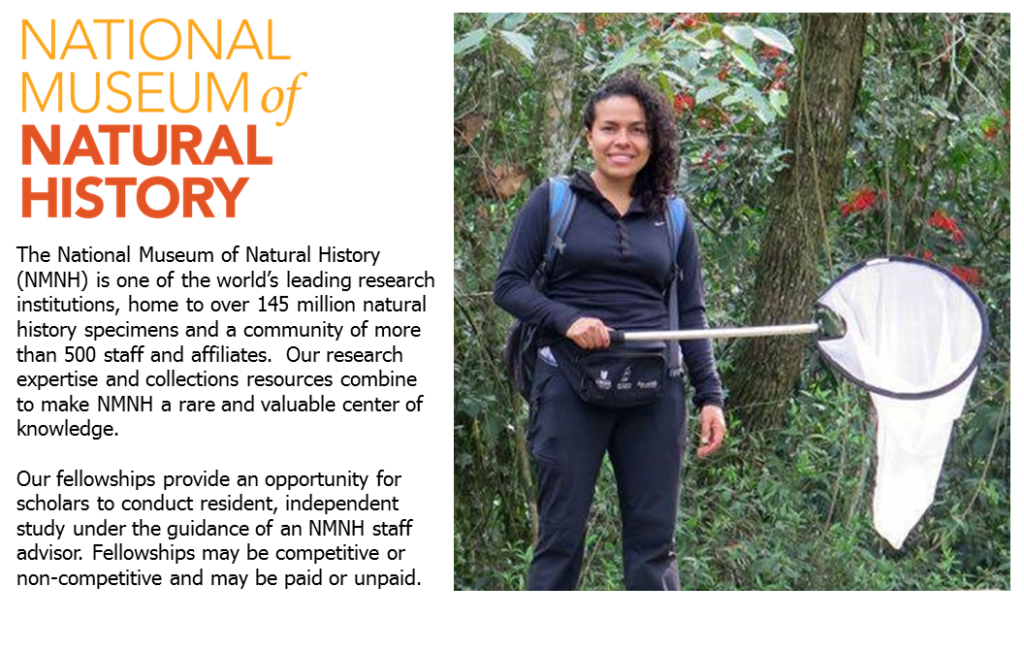
NMNH Fellowships & Programs
- BUCK: Peter Buck Fellowship Program partners with the Smithsonian Institution Fellowship Program (SIFP) to increase the flow of new ideas, perspectives, and skills into the Museum through full-time, resident, multi-year postdoctoral fellowships. Full-time, resident fellowship awards are granted to external postdoctoral scholars who have received a Ph.D. or equivalent within the last five years. In addition, some pre-doctoral fellowships are awarded to students seeking to conduct full-time, resident, original research utilizing NMNH collections and facilities. Pre-doctoral candidates must be enrolled in a degree-granting Ph.D. program. Peter Buck fellowships are open to citizens of any country. For more information, click here.
- BUCK-DT: Deep Time Buck Fellowship Program awards two-year research fellowships (postdoctoral) in Paleobiology relating to the goals of the NMNH Deep Time Initiative. This fellowship involves 75% time commitment to research and 25% time commitment toward advancing science education at NMNH through direct interaction with our public. For more information, click here.
- AIP: American Indian Program encourages participation of Native Americans in Smithsonian activities through fellowships that support collections research, exhibitions, and public programming as they relate to Native peoples. More information, click here.
- BOSS: Kenneth Jay Boss Fellowship in Invertebrate Zoology provides support to graduate students interested in conducting resident, independent collections-based research in the Department of Invertebrate Zoology (IZ) at NMNH. The fellowships range from one week to up to six months and are awarded preferentially to students researching mollusks, although proposals focused on other invertebrate groups will be considered. For more information, click here.
- BOTANY TRAVEL AWARDS: Cuatrecasas / Funk / Robinson / Smith Fellowship Program These awards are sponsored by the NMNH Department of Botany and support the study of botanical specimens housed in the U.S. National Herbarium, with preference given to students or researchers who work on tropical plants. For more information, click here.
- COLLETTE: Sara E. and Bruce B. Collette Postdoctoral Fellowship in Systematic Ichthyology supports full-time, resident, independent research focused on the study of systematics, comparative morphology, and field investigations of fishes utilizing the NMNH collections. This is a two-year award. For more information, click here.
- FILLING: Constance Filling Graduate Student Fellowship provides support for ten-week graduate student fellowships focused on anthropological studies while in-residence at the Department of Anthropology at the National Museum of Natural History in Washington DC. For more information, click here.
- HEVEY: Robert Hevey Graduate Student Fellowship provides support for ten-week graduate student fellowships focused on geological studies while in-residence at the Department of Mineral Sciences at the National Museum of Natural History in Washington DC. For more information, click here.
- LINK: Link Foundation/Smithsonian Graduate Fellowships in Marine Science awards 12-week graduate student fellowships to conduct marine science research at the Smithsonian Marine Station in Fort Pierce, Florida. For more information, click here.
- MARINEGEO: MarineGEO Postdoctoral Fellowship Program is part of the Smithsonian’s Tennenbaum Marine Observatories Network (TMON) to advance the goals of the Marine Global Earth Observatory through the study of marine biodiversity and ecosystems using standardized approaches. Postdoctoral fellows must collaborate directly with two or more Smithsonian scientists as named co-advisors and must select co-advisors from more than one Smithsonian unit (National Museum of Natural History, Smithsonian Marine Station-Fort Pierce, Smithsonian Environmental Research Center, Smithsonian Tropical Research Institute, National Zoological Park). For more information, click here.
- REED: Edward B. and Phyllis E. Reed Fellowship for Research on North American Freshwater Copepods supports endeavors that clarify systematics, taxonomy, ecology and biogeography of freshwater copepods of North America, and, in particular, seeks to strengthen career development of a graduate student, postdoctoral trainee or young professional. For more information, click here.
- SIMA: Summer Institute in Museum Anthropology is an intensive four-week residential training program in museum research methods for graduate students in cultural anthropology. It uses the Smithsonian’s anthropological resources as a “field site,” giving students hands-on experience in collecting and analyzing data from collections in conjunction with formal training methods, all centered around individual research projects. For more information, click here.
Smithsonian American Art Museum and its Renwick Gallery (SAAM)
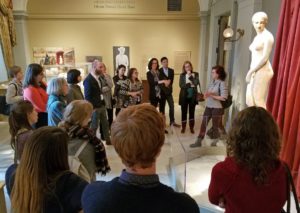
The Smithsonian American Art Museum hosts fellows appointed through the Smithsonian Institution Fellowship Program (SIFP), the Big Ten Academic Alliance Smithsonian Fellowships, the Smithsonian Artist Research Fellowship Program (SARF), the Smithsonian Postgraduate/Postdoctoral Fellowships in Conservation of Museum Collections Program, and the Arts and Humanities Research Council’s International Placement Scheme (IPS).
In addition, the museum offers several named fellowships. The Joe and Wanda Corn Fellowship is endowed by their former students Mike Wilkins and Sheila Duignan and supports scholars whose research interests span American art and American history. Recipients will draw on the Smithsonian’s broad resources in both areas, utilizing the holdings of the Smithsonian American Art Museum and the Smithsonian’s National Museum of American History. The Douglass Foundation Fellowship in American Art is awarded annually to a predoctoral scholar conducting research in American art. The Patricia and Phillip Frost Fellowship is offered to support research in American art and visual culture. The George Gurney Fellowship funds pre- and postdoctoral research on American art, preferably sculpture, in honor of the distinguished career of the museum’s former curator of American sculpture. The Joshua C. Taylor Fellowship is supported by alumni and friends of the fellowship program. The Terra Foundation Fellowships in American Art foster international research on American art and visual culture prior to 1980 that relates to the collections of the Smithsonian Institution. Fellowships of three to twelve months are available at the predoctoral, postdoctoral, and senior levels to scholars from abroad who are researching American art or to US scholars with an exceptionally strong international component to their study. The William H. Truettner Fellowship, which funds pre- and postdoctoral research on American art, is a tribute to Mr. Truettner’s career of nearly fifty years as a curator of painting and sculpture at the museum. The Wyeth Foundation Predoctoral Fellowship is awarded for the advancement and completion of a doctoral dissertation that concerns the study, appreciation, and recognition of excellence in all aspects of American painting created prior to 1970. The terms of these fellowships, as well as the application guidelines and deadlines, are the same as for the Smithsonian Institution Fellowship Program. However, senior-level Terra Foundation Fellows are eligible for an augmented stipend of $60,000 for a twelve-month appointment. Applicants to the Smithsonian Institution Fellowship Program who propose a primary advisor/supervisor from the Smithsonian American Art Museum will be considered for all relevant award categories at this unit. More information about all these opportunities can be found here.
Smithsonian Astrophysical Observatory (SAO)
The CFA Postdoctoral Fellowship is available at the Harvard-Smithsonian Center for Astrophysics (CfA), beginning in the summer or autumn of each year. Research programs at the CfA include instrumentation, observation, and theory in atomic and molecular physics, geophysics, the solar system, stars, galaxies, and cosmology. Techniques used range from computer simulations through observations in the radio, infrared, optical, ultraviolet, X and gamma-ray bands, to in-strument development and laboratory experiments. Facilities include the MMT (Fred Lawrence Whipple Observatory, Arizona), Magellan (Las Campanas Observatory, Chile), and other optical and infrared telescopes; radio telescopes, especially the Submillimeter Array on Mauna Kea, Hawaii; a large Beowulf cluster and network of workstations; a number of specialized laboratories; an outstanding library system; and access to data from a wide range of space missions, especially the Chandra X-ray Observatory and the Spitzer Space Telescope. More information can be found here. The SAO has a Visiting Scientist Program designed to expand the scholarly exchange of scientific information in the areas of atomic and molecular physics; infrared, optical, radio, and X-ray astronomy; planetary sciences; geophysics; solar and stellar physics; and theoretical astrophysics. The Program annually attracts many international and national visitors. They come for a well-defined scientific purpose, which may be to collaborate with a specific individual, to access unique data, or to use specialized facilities. Visits vary from a few days to several weeks or months, and in some cases up to a year. Stipend support varies with the length of the visit and the amount of support being provided by the visitor’s home institution, or by a fellow-ship such as a Guggenheim, NATO, etc. More information is available here.
Smithsonian Center for Learning and Digital Access (SCLDA)
The Smithsonian’s Fellowships in Museum Practice (FMP) program is an opportunity for mid- and senior-level museum personnel, researchers and training providers to spend time at the Smithsonian researching a particular topic of interest that is relevant to their work at the intersection of digital education and the museum profession. The goal of the program is to provide opportunities for researchers who empower students, teachers, and lifelong learners to access, integrate, and add to the Smithsonian’s digital collection of assets. Fellows promote the exchange of knowledge in their field and increase the Smithsonian’s impact as a national educational organization. 1-2 fellowships are awarded annually for a period of up to 6 months. An award consists of a stipend of $3,500 per month plus round-trip travel expenses between the recipient’s home and Washington, D.C.
To find out more, go here.
Smithsonian Environmental Research Center (SERC)
The Smithsonian Environmental Research Center (SERC) support 25-30 postdoctoral and other fellows every year. You can find out more about these programs here .
Smithsonian Institution Libraries (SIL)
Baird Society Resident Scholar Program
Awards stipends of $3,500 per month for up to six months to support scholarly research in the Special Collections of the Smithsonian Libraries in Washington, DC and New York, NY, in an extensive range of subject areas. Doctoral students and post-doctoral scholars are welcome to apply. Scholars must be in residence at the Smithsonian during the award period. Collections include printed materials on world’s fairs (19th and early 20th centuries); manufacturer’s commercial trade catalogs in the National Museum of American History Library (285,000 pieces representing 30,000 companies dating from the 19th and 20th centuries); natural history rare books in the Cullman Library (pre-1840 works on topics such as botany, zoology, travel & exploration, museums & collecting, geology, and anthropology); air and space history in the National Air and Space Museum Library’s Ramsey Room (ballooning, rocketry, and aviation, late 18th to early 20th centuries); James Smithson’s library in the Cullman Library; rare materials in European and American decorative arts, architecture, and design in the Cooper-Hewitt National Design Library (18th to 20th centuries); and history of art and artists (exhibition catalogs, catalogues raisonnés, serials, dissertations and artists’ ephemera) at the American Art Museum/National Portrait Gallery Library. This award is supported by the many annual donors to the Smithsonian Libraries. More information can be found here.
The Dibner Library Resident Scholar Program
Awards stipends of $3,500 per month for up to six months to support scholarly research in the Special Collections of the Dibner Library of the History of Science and Technology in Washington, DC. Doctoral students and post-doctoral scholars are welcome to apply. Scholars must be in residence at the Smithsonian during the award period. The Dibner Library has manuscripts and rare books dating primarily from the fifteenth to the nineteenth centuries. Collection strengths are in the fields of mathematics, astronomy, classical natural philosophy, theoretical physics (up to the early twentieth century), experimental physics (especially electricity and magnetism), engineering technology (from the Renaissance to the late nineteenth century), and scientific apparatus and instruments. This award is supported by the family of Frances K. Dibner. More information can be found here.
Neville-Pribram Mid-Career Educators Awards
The Neville-Pribram Mid-Career Educators Awards allow mid-career educators to be in residence and utilize the Smithsonian Libraries distinctive collections, focusing on science, history, culture and arts. The awards are open to middle & high school teachers, college teachers, and museum educators working on curriculum development or publications in print or electronic form. More information can be found here.
The Margaret Henry Dabney Penick Resident Scholar Program
Supports scholarly research into the legacy of Patrick Henry and his political circle, the early political history of Virginia, the history of the American Revolution, founding era ideas and policy-making, as well as science, technology, and culture in colonial America and the Early National Period. The stipend for this long-term fellowship is $45,000 for nine consecutive months. Senior scholars are particularly encouraged to apply, but all applicants must hold a PhD to be awarded the fellowship. Fellows are expected to give at least one public lecture during the tenure of the fellowship as well as to show definite progress toward a publishable manuscript by the end of the fellowship period. Fellows may also be asked to cooperate with the Library administration in planning scholarly programs. This award is supported by a bequest from Margaret P. Nuttle. More information can be found here.
Smithsonian Latino Center (SLC)
The Latino Museum Studies Program provides a national forum for graduate students to share, explore and discuss the representation and interpretation of Latino cultures in the context of the American experience. It provides a unique opportunity to meet and engage with Smithsonian professionals, scholars from renowned universities, and with leaders in the museum field. The program lasts five weeks and is offered in two components. The first is a one-week instructional seminar that includes panel discussions, lectures, workshops, and behind-the-scenes access to Smithsonian collections. The second is a four-week practicum with participants working on specific projects with Smithsonian professionals. Program Dates: June 27-August 5, 2016. Deadline: All application materials are due no later than April 8, 2016 at 5:00PM EDT. For more information, visit latino.si.edu/Education/Studies. To apply, create a user account in SOLAA at solaa.si.edu.
Smithsonian Tropical Research Institute (STRI)
Short-Term Fellowships:The STRI Short-Term Fellowship Program allows selected candidates to come to STRI year-round and is an excellent resource to provide support for graduate students and introduce them to tropical research. Although focused primarily on graduate students, awards are occasionally given to undergraduate and postdoctoral candidates. These fellowships enable selected candidates to work in the tropics and explore research possibilities at STRI. The Ernst Mayr Fellowship is awarded to an outstanding Short-Term Fellowship candidate every year. Earl S. Tupper 3-Year Postdoctoral Fellowship:STRI’s most prestigious fellowship provides complete freedom to pursue intellectual curiosity at one or more of our nine facilities in Panama for three years.
Find out more about STRI’s fellowship programs here. |







